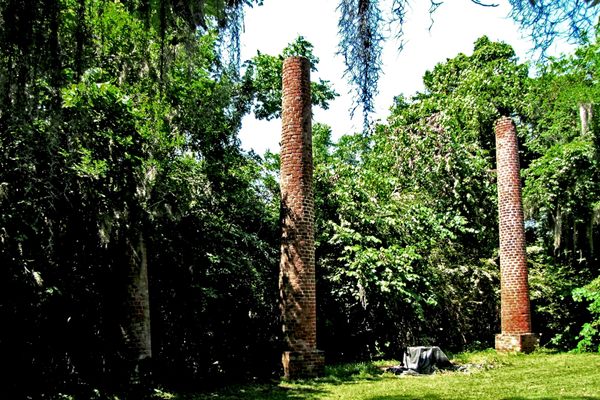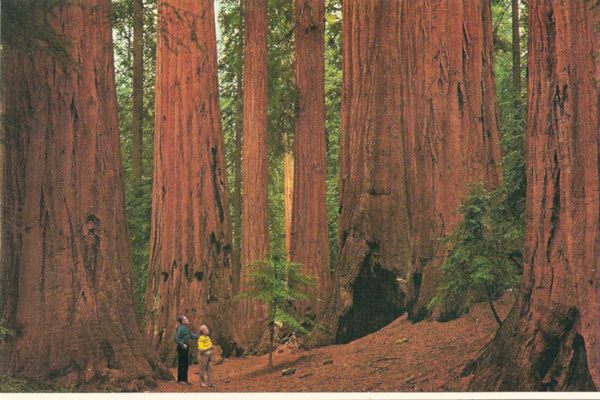Rusting Ruins Inside Chile’s Largest Nitrate Ghost Town
A water tower on the west side of Humberstone, Chile (all photographs by the author)
Northern Chile is dotted with ghost towns abandoned long ago, which are slowly falling to pieces in the harsh Atacama desert. These towns were built around a mining industry that produced a product called Saltpeter (sodium nitrate), which was an important part of fertilizer production from the late 1800s.
The Saltpeter works and the towns constructed around them became obsolete after two German scientists synthesized ammonia during the late 1920s, which meant fertilizers could be produced more efficiently and at a fraction of the cost. Within 30 years, most of the towns and Saltpeter works had been all but abandoned.
It’s now possible to explore all but one of these ghost towns, the exception being Chacabuco, which was used as concentration camp during Augusto Pinochet’s regime and is now surrounded by lost land mines.
Humberstone was the largest of the nitrate towns. It is easily accessible, making it a perfect day trip from the nearby costal city of Iquique. Humberstone (and the nearby Santa Laura Saltpeter Works) are now UNESCO World Heritage Sites and require a small entry fee at the gate. However, once inside you are free to explore the ghost town and factories almost completely unrestricted.
The gates to Humberstone
Once you pay your fee and receive a map of Humberstone, the first few rows of old houses have been partly restored and turned into a museum, which explains the functions of certain parts of the town, as well as displaying artifacts left behind by the residents. The citizens of Humberstone had to be quite resourceful living in the isolated and harsh conditions of the Atacama Desert, and the museum does a good job of demonstrating how people made do and recycled what they had.
Children’s toys made from found & recycled parts left behind at Humberstone, including wire guns, slingshots, tin can trains, & “hoop & wheel” toys
How a typical child’s bedroom in Humberstone would have looked
A collection of cooking stoves & utensils left behind by Humberstone’s residents
More items left behind by Humberstone residents
If you head to the very east of town, you will find hundreds of wall-to-wall houses where the workers and their families used to live (shown at the top of this post).
Looking down the rows of houses where the workers lived. Fun fact: A small earthquake struck while I was exploring Humberstone around this point. It was quite an eerie experience.
Some cartoon characters painted inside one of the bedrooms, presumably a child’s room
A typical kitchen inside one of the workers houses
Moving back towards the center of town, you will find all of the town’s main facilities, including the theatre, supermarket, hospital, school, church, main square, market, hotel, train station, mechanics, and sports stadium, which are all open and free to explore. Strangely, behind the church you can also find a small museum dedicated to the different doors and windows around Humberstone.
The local swimming pool, installed late in Humberstone’s life
The pool is made from iron with pot rivets salvaged from old factory machinery. Living in the desert, the residents had to be resourceful at Humberstone.
The town theatre. The inside of this building has been restored to working order, as it is occasionally used for events.
The outdoor basketball court, including the grandstands & changing rooms
The exterior walls of the school are slowly crumbling away, leaving these wooden wall slats behind
One of a number of classrooms at the school in Humberstone
A room inside the town hospital
This small gazebo sits in the centre of the towns park which was probably once surrounded by green grass
Once you pass through the town’s main amenities in the center heading west, you will come across where the more important residents of Humberstone lived, including including the mayor and the owner of the Saltpeter mines.
One of the houses on the west side of town. Take note of the two black water pots beside the front gate. They are made out of recycled car tires, another example of Humberstone resourcefulness
The bathroom of the house pictured above, still complete with checkerboard lino on the floor
Another of the nicer, larger houses on the west side of town. A water trough made from recycled machinery parts sits out front.
The town was here for one reason, which was to mine the saltpeter. Heading northwest from the town, you won’t be able to miss the huge sheds and towering cast iron chimney of the Humberstone processing facility, just a stone’s throw away from the actual town. Beside the work area, you will also see a ridge which gives you a great lookout point to the town and the mines in all their glory.
The Saltpeter Mine on the edge of Humberstone, as seen from the lookout point on the ridge beside it. In the far distance, you can just make out the silhouette of the Santa Laura Saltpeter Works, too.
One of the giant machines left behind in the industrial area of Humberstone, possibly part of a small power plant which likely provided electricity to the mine & the town.
Old trains & train parts sit abandoned in the industrial, as well as the residential, parts of town. These trains were paramount in transport of both the people & products of Humberstone.
One of the many factories filled with industrial parts & machinery, which has sat eerily silent for more than 30 years, with unrepaired motors, tractors, cars & parts slowly rusting away.
It almost seems as if the workers just put their tools down & left halfway through the day
Debris lays strewn all over the town, some of it just scrap, but some of it which gives you more of a glimpse into the lives of Humberstone’s residents.
Find more of Chris Staring’s photography at www.chrisstaring.com or his Instagram account @SkareMedia.

















Follow us on Twitter to get the latest on the world's hidden wonders.
Like us on Facebook to get the latest on the world's hidden wonders.
Follow us on Twitter Like us on Facebook